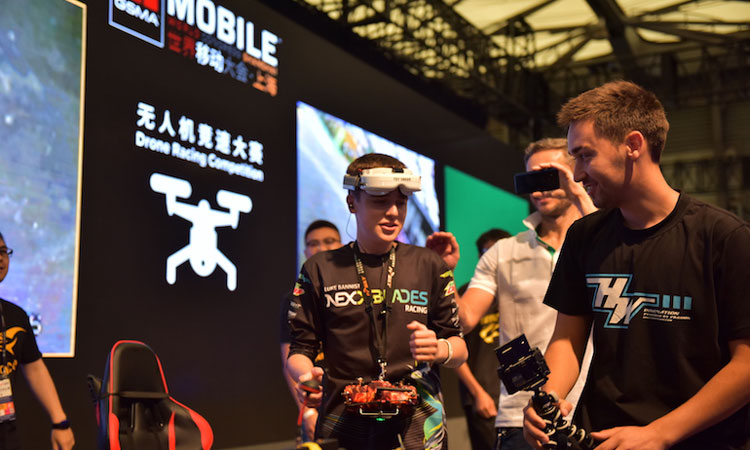Missing out on Mobile World Congress Shanghai 2017, doesn’t necessarily sound like the end of the world, but when you see the drone racing which took place there, you will kicking yourself at your absence at the show.
Not just any drone performance took the center stage at the show though.
It was the drone races that wowed the crowds.
The event was billed as the largest indoor drone racing event in Asia, and drone pilots from around the world competed for the tournament title.
The competition centered on flying First Person View (FPV) drone technology in daily ‘knockout’ tournaments.
Safety First
Safety was ensured, and goggle devices were worn by pilots.
However, these goggles also gave them an exclusive view of the race course as their drone flew through.
It is a privilege and accomplishment to take part in the drone race, but not all the drones made it out unscathed.
The course proved to be hazardous, especially for the weaker drones.
Many of the drones did crash as they sped through the brightly-lit but complicated, long and looping tracks and checkpoints, which had intentionally sharp turns within its design.
The attendees of the show watched on as the world leading pilots competed in the Drone Racing Competition.
The evolution of drone racing
Drones and drone racing have been sky rocketing in popularity recently.
The drone races at the MCW were not the peak of drone coverage.
At an event in Dubai last year, there was an even bigger outdoor drone course.
Hosted by Skydive Dubai, the first World Drone Prix was held in March 2016.
Over 150 teams competed for a cash prize of a $250,000.
The course had a series of illuminated hoops and extremely challenging twists and turns.
Named ‘Rollercoaster’, the specially-designed, three-dimensional aerial track proved a challenge.
An advanced GPS tracking system was employed to ensure that the drones remained within the five meter diameter of the track.
The teams were in groups of four. Pilots used a real time visor device that enabled them to navigate via their drone’s onboard camera. This was all from a first-person viewpoint.
Other team members on each included; a navigator, a pit-stop attendant and a technician. Every member was needed as the race was intentionally designed to cover more ground than a drone’s battery life could withstand. They also included a Fomula-1 style pit-stop for refueling.
With quite a difficult course it came as surprise that it was a teenager to take the crown.
It was 15 year old, British Luke Wolferstan-Bannister, that took first place in both events.
Or as he is better known in the drone world, Banni.
Check out here some of Banni’s amazing drone-flying adventures.


Comments are closed, but trackbacks and pingbacks are open.